WITH JUST A PINCH OF SPOILERS!
When I first heard about plans for a new children-oriented Star Trek TV series from CBS Studios (now part of Paramount), I was VERY dubious. First of all, it didn’t “sound” like Star Trek. The show would focus on a group of renegade teenage characters finding a derelict Starfleet ship which they would use to “…search for adventure, meaning and salvation.” Huh? No Starfleet crew other than Kate Mulgrew voicing Kathryn Janeway? Teenagers (and renegade teenagers, at that)? They hadn’t even gone to Starfleet Academy!
At the time ALEX KURTZMAN announced the new “kids-focused” Star Trek series (January 2019), STAR TREK: DISCOVERY was about to premiere season 2, while PICARD and LOWER DECKS were still a year and a year-and-a-half away, respectively. So with only Discovery‘s first season to go on, well, you can understand my trepidation about a new children’s version of Star Trek. I mean, no one would be allowed to use swear words!
Even after Picard and Lower Decks premiered (and I enjoyed both MUCH more than Discovery), I was still apprehensive about STAR TREK: PRODIGY. And to be honest, I wasn’t entirely thrilled with the first few episodes I saw. But I was intrigued enough to keep watching. And by the end of episode 5, I was hooked. After the brief winter holiday hiatus of 2021, the next 5 episodes in early 2022 had me positively captivated by the new series—I LOVED IT!!!
And apparently, I wasn’t the only one. If you look at the average audience scores on Rotten Tomatoes (more reflective of widespread fan reaction…and fans can be HARSH!), here’s how the current five streaming Trek series stack up…
Prodigy is the second-most well-received of the new Star Trek series, all but doubling the ratings for Discovery and Picard and coming within docking range of Strange New Worlds.
Now, when asking WHY Prodigy performed so surprisingly well, it’s easy to say, “Well, it has good writing, quality animation, and solid characters.” Or you could say, “It’s fun and it ‘feels’ like Star Trek.”
But I want to go a step farther. Prodigy serves THREE masters: younger viewers unfamiliar with the franchise, longtime Trekkers, and the executives who want to attract the “next generation” of fans. And looking at it from this perspective, I believe that Prodigy is a “PERFECT” Star Trek series. I don’t mean to imply that there’s nothing wrong with it; everything has room for improvement. But in terms of meeting the needs and desires of its “masters,” Prodigy succeeds perfectly in all three cases.
Let’s take a closer look at what I’m talking about…
FOR THE “SUITS”…
Unless you’ve been assigned to produce a DC superhero movie with a female lead, the goal of nearly every studio production is to create a quality product that is commercially viable and doesn’t lose money. And if it actually makes money, even better.
While that was certainly true as a baseline goal for Prodigy, the executives in the steel towers at CBS Studios also had another target in mind: attract and convert a new generation of Star Trek fans (and maybe some of their non-Trekkie parents, as well). The challenge, of course, is that Star Trek is now more than five and a half decades old with over 750 hours(!!!) of filmed, canonized content. That’s a VERY full suitcase for a new viewer to try to unpack, and the powers-that-be are well aware that an overwhelmed viewer isn’t likely to become a fan if they’ve already missed so much.
A show like Picard or Lower Decks, relying on a preexisting familiarity with tons of established canon from multiple series, would have been the worst of ideas. So instead, Prodigy begins with a “clean slate,” of sorts. The main characters start off completely clueless about Starfleet, but they’re interested and motivated to learn more…just like the viewers! So as the child crew members on the U.S.S. Protostar discover more about Starfleet, the Federation, its races, and its history (essentially discovering Star Trek), so do the children viewers! In this way, the concept of outsiders (renegades) being slowly and gently escorted into the tent is BRILLIANT!
There’s no way to know yet if the strategy is working and whether a whole new generation of “tweens” (a demographic defined as kids aged 8-12…or 9-13…marketing companies are kinda vague on the precise age range) will become Trekkies. But in my opinion, this was the best onramp for them. What began as slow revelations about what Starfleet was—explaining transporters, warp drive, phasers, replicators, the holodeck, etc.—evolved into fun and compelling references to established canon like notable starships and the beautiful and touching sixth episode “Kobayashi,” where Dal gets to run a holodeck simulation on the bridge of the Enterprise-D featuring some iconic characters voiced by audio clips from beloved-but-deceased actors LEONARD NIMOY, JAMES DOOHAN, NICHELLE NICHOLS, and RENÉ AUBERJONOIS (plus still-alive GATES McFADDEN as holographic Dr. Beverly Crusher).
Younger viewers even got a glimpse into their grandfather’s (and even great-grandfather’s) Star Trek with “All the World’s a Stage” showing a civilization adopting TOS cosplay as a way of life, eventually giving us both an old-style shuttlecraft and this precious recreation of our favorite bridge layout…
Talk about priming the pump! These young viewers will be 100% ready for Star Trek reruns!
All the while, the mysteries for the audience keep getting revealed and solved bit by tantalizing bit. It might seem a little frustrating at times not to be spoon fed everything all at once, but it’s these unknowns that keep the audience coming back, wanting to find out more about what’s going on. And along the way, they get served a constant stream of new morsels about Star Trek history…just enough to digest in bite-sized nuggets.
By the time viewers get to the end of the just-aired episode 20, “Supernova, Part II,” (which also serves as the end of the first season), they now know enough about Starfleet and the way it operates to be invested in the series and its characters. And thanks to the inclusion of Janeway, it’s a short hop over to streaming episodes of Star Trek: Voyager on PARAMOUNT+ , and from there, maybe onto TOS, TAS, TNG, or DS9. No one has to become an obsessed Trekkie overnight—only curious enough to justify a continued monthly subscription to the streaming service. That makes “the suits” happy.
FOR THE CHILDREN…
Back in college, getting my B.A. in Psychology, I learned about mental, emotional, and social development in children as they grow into adults. And as the father of a 12-year-old, I’m seeing the show live and in-person on a daily basis! As such, it’s important to look at Star Trek: Prodigy not only as an adult viewer but also from the perspective of a typical tween—not that any tween is “typical,” of course! But there are some general milestones that happen between the ages of 8 and 12.
For an 8-year-old, parents are in charge. Period. They giveth and they taketh away. They make the rules that must be followed, without question. Kids at this age still want to be with their parents most of the time, doing fun things, learning from them, getting love. (Keep in mind, this is all assuming good parenting and non-special-needs/spectrum children—covering that would take waaaaaay too many blogs!).
By the age of 12, parents are “kinda” in charge, but kids are beginning to question authority, question rules, talk back, and challenge assumptions. Next stop: teenagers (YIKES!). By the age of 12, many kids are discovering that they would rather be with their friends (or even by themselves in their room) than with Mom and/or Dad. They are growing independent, but not completely. Far from it, in fact! But they are beginning to discover who they are, and “I want to be just like my mommy/daddy” is no longer the automatic answer.
Kids at this older age are also becoming more aware of their bodies—both the changes that are beginning as well as the imperfections and how those are perceived by others. Personalities and relationships become more complex. There is much more “drama”and even social “politics” in a classroom full of 6th and 7th graders than in a classroom of 2nd or even 3rd graders.
And now, back to Prodigy…
While there’s still cartoon fare for kids like Loony Tunes, Scooby Doo, SpongeBob, and countless other “over-the-top” and/or whacky characters, there’s also been a move to tailor children’s programming (especially tween and teen programming) to include characters that younger viewers can relate to. And it’s not simply to get kids to say, “Hey, that person is a lot like me…” but to present these characters in a positive way that takes a problem or issue that a child might be facing and showing that character dealing with and even overcoming it.
Granted, there’s no way to represent every kind of child archetype in a single animated series, but Prodigy has a very strong foundation of giving kids characters that very likely speak to many of those young viewers. Let’s discuss…
DAL R’EL – It’s easy enough to say, “Dal is a jerk, kind of a bully, and an idiot.” And I won’t argue with you. But the character goes much deeper than that, and kids can see it (even if they can’t necessarily put it into words). Lots of children have a kid in their class like Dal: cocky, (over)confident, a bit of a class-clown craving attention, pushy, overbearing, and even arrogant. Maybe they don’t like him (or her), or maybe they do. But Dal deconstructs the archetype. The cockiness covers up for an overwhelming insecurity. He’s basically clueless and making things up as he goes. Left to his own devices, Dal would probably crash and burn. And deep down, he knows this.
But Dal is NOT left entirely to his own devices. A character who started out as a loner (they all were) gradually discovers the value of being part of a team, even a family—always a positive message for children. Also, we slowly learn that Dal has a good and brave heart, culminating in his willingness to sacrifice his own life in the season one finale. He might not be captain material to start with, but he’s getting there. And building a character through a gradual but progressive arc is the mark of a strong and well-thought-out series.
GWYNDALA – Remember how I said that the tween years are marked by children beginning to pull away from their parents? Interestingly enough, Gwyn is the only one of the crew with a parent (The Diviner), and their relationship also goes through a stressful evolution as she asserts herself and takes a position in opposition to her father. She still loves him, and he her. And eventually, that love reemerges in the penultimate episode of the season just before he dies (assuming he is, indeed, dead). But most of Gwyn’s angst originates from questioning all that her father wanted her to be versus what she herself wants to be…something very familiar to many children as they approach and go through their teen years.
Gwyn is also the “angry” kid archetype, but not an uncontrolled rage. Her resentments are more intense and focused. She keeps mostly to herself. But she’s also very capable (skilled) and very independent. Her character arc, like Dal’s, lies in learning how to trust others and be part of a team/family while also letting go of her anger and intensity. And indeed, just like Dal, she grows and gradually mellows as the first season develops.
JANKOM POG – On the surface, Jankom is the “fat kid.” But he’s not embarrassed about it. He likes to eat. He likes to complain, as well, but he takes things in stride and seems to be generally happy-go-lucky. He’s very skilled at fixing things (all starships need a miracle worker!), and he serves the series well as both the comedy relief as well as the “voice” of the audience. In other words, Jankom is there to explain the complex technobabble by putting it in dumbed-down layman’s terms. “Oh, Jankom Pog gets it! You mean we’re going to [insert simplified explanation here].”
Does Jankom have something to teach kids? Of course! It’s okay to be the fat kid, it’s okay to complain a little, as long as you’re willing to be a part of the solution (which Jankom usually is), and you might as well smile and be happy, make some jokes, and enjoy life. That’s not bad advice in a world that has far too many Gwyns in it.
ZERO – He’s one of the two “smart kids” (the other being ROK-TAHK). Both have insecurities about their physical appearance—as many tweens and teens do—but those issues are very different and unique for each character. In Zero’s case, seeing his true form can literally cause madness. So a child who thinks that he or she is ugly might identify more with Zero than Rok-Tahk. In addition, Zero started off feeling the most isolated of any of the crew (except maybe Gwyn) because he was so different. Not only could he not let people see his true self, he literally existed inside of an isolation suit.
Children who, themselves, feel lonely and isolated can take solace and inspiration from Zero’s experience on the show. He finds acceptance among this group of misfits who quickly become his family. Within a few episodes, Zero no longer feels lonely or isolated, and he embraces the differences that make him unique and a valued part of the crew. He can do things others can’t, and that makes him feel special and appreciated. If only all children could share in that positive feeling!
ROK-TAHK – If Zero is the “ugly” kid (also awkward and nerdy), then Rok-Takh is the kid with body issues—either too fat, too thin, too tall, too short, too clumsy, or any number of “imperfections” that some children see when they look in the mirror. In Rok’s case, she looks like a horrendous and huge rock monster. But inside is the sweet soul of a loving, nurturing, and enthusiastic little girl. If only people would look beyond the physical appearance, they’d discover someone truly worth knowing and being friends with. Again, what an inspiring message to tweens…not just those with their own appearance issues but those who might otherwise shun or make fun of those with less than “perfect” bodies.
Rok-Tahk also likes science a lot, but there’s so much science out there! What does she want to specialize in? How about everything! For children, the world is full of possibilities. Why limit yourself to only one thing? Explore! Try lots of new stuff. Find out what you like to do and don’t be afraid to keep looking…even after you find something. That’s what growing up is all about. Again, this is a wonderful, positive, and encouraging message for children.
MURF – At first, I kinda thought of Murf as the “super pet” of the bunch. Kids love to have pets. But after his metamorphosis, I’m beginning to wonder if Murf isn’t more of the younger brother or sister (or cousin) that many kids have, whom they watch grow and develop from being a helpless baby into learning to walk, run, talk, and do lots of other amazing things…just like they themselves did! The crew looks after Murf the same way that kids look after a younger sibling. The idea that Murf represents all children who grow, learn, and develop is intriguing to me, so I’m not drawing any final conclusions yet about Murf.
And keep in mind, young viewers don’t need to choose ONLY one character to identify with. When I was a kid, I was a little bit Zero and a little bit Rok-Tahk, but I ate like Jankom and had a sense of humor like Dal. The most important thing is that children see these characters growing and overcoming their insecurities, learning about themselves and working together as a team.
JANEWAY – I should also mention holographic Janeway. She is, of course, the “parent” of the show…the keeper of knowledge, the caretaker (get it?), and the dispenser of rules. But she is also loving to the children (crew), encouraging them, chiding and cheering them, and setting the example of what Starfleet (their ultimate goal in learning to become an adult/cadet) is supposed to be. But note that Janeway is not in charge, although it’s kind of a vague situation…just like what happens as kids grow older. Tweens and even teens still have rules, but those rules evolve. Bedtimes get later. They’re allowed to go out on their own, and even (gasp!) drive! The crew still relies on Janeway for lots of things, but as they become more adept at running the ship and more independent, there’s more for them to do and less for her to do to take care of them. Welcome to parenthood!
Oh, and of course, the show looks cool, has an exciting ship that can do lots of neat stuff, an awesome scary villain (voiced brilliantly by actor JOHN NOBLE), fun guest characters that last for one or two or three episodes, and has good stories that are easy enough for the little kids to follow but complex enough that the older kids aren’t bored. With Prodigy, children know they’re watching a quality show.
FOR THE FANS…
When Prodigy first began, many fans were asking in complete confusion: WHERE THE HECK ARE WE? We see what looks like a Kazon in the first episode…Delta Quadrant? After all, KATE MULGREW would be playing Janeway. But then we learn that there’s a Medusan and what appears to be a Tellarite on this prison colony…and those are Alpha Quadrant species. Aren’t they? Maybe this series takes place far into the future when travel across the galaxy is much faster…
That’s about the time we started asking instead: WHEN the heck are we?? Janeway is a hologram based on one of the most decorated captains in Starfleet history, so it’s obviously after Voyager‘s return from the Delta Quadrant. Of course, then we see that holographic Janeway’s uniform is from the Voyager “era” (although the comm badge doesn’t match).
However, by the time Voyager returned to Earth, Starfleet uniforms had changed to the gray-shouldered versions of late DS9 episodes. Did Starfleet go back to a previous uniform style? Lower Decks and Picard seem to argue otherwise. So…WTF?
By the end of the fifth episode, we discover that the Protostar was commanded by Captain Chakotay(!!!), and we see that his uniform is different than any we’ve seen before. So maybe this is a significant amount of time after Voyager‘s return, but short enough that Chakotay is still young enough to command a deep space mission. Maybe ten or twenty years?
I should mention that interviews like this one on Den of Geek had the creators saying that “…Prodigy happens in the year 2383; five years after the end of Voyager, roughly a year after the most recent season of Lower Decks, and very close to the earliest flashback in Picard, in 2385.” Of course, those Lower Decks stardates were in the 57000 range, and Janeway gives the stardate in episode 10 of Prodigy as 61103.1, about FOUR years after Lower Decks‘s third season. It also appears that this time frame was reconsidered later on, as the Starfleet uniforms we see once the Protostar meets up with the real Admiral Janeway are similar to those seen on season two of Picard…although the color/black areas are reversed (but the comm badges match, with the gold and silver areas reversed).
Whatever the time period, it appears we’re seeing “modern” 24th/25th century Star Trek, as opposed to the mid-23rd century of Strange New Worlds or the convoluted 31st century dystopian future of Discovery. This is the period of Federation history that many fans are the most interested in at the moment, as it stems from three of the main series (TNG, DS9, and Voyager) and is the closest we’ll get to “current” events in Star Trek.
Fan fealty is also respected in the fact that the Ferengi, Kazon, Romulans, Klingons, Vulcans, Andorians, and Tellarites (except for Jankom) all look like those alien races we are used to. None of this Discovery crap where Klingons become all but unrecognizable and Andorians, Tellarites, Ferengi and others are “modernized” to look…what? Cooler? More awesome? I suspect that most fans just want the aliens we grew up with.
Also, the Protostar LOOKS like a Federation starship. The interiors appear like what you’d see inside a Starfleet vessel from the late 24th century. The Enterprise-D bridge we see on the holodeck is a perfect recreation. And of course, the Starfleet starships are all recognizable designs, as this conveniently-edited video shows…
Of course, it was fun trying to sort it all out along the way: where they are, when they are, why the kids can’t just call Starfleet and say, “We found your ship; come and get it.” And how they finally manage to communicate is handled extremely well. Even the “mind-swapping” episode, which could and should have been cringe-worthy, turned out to be one of the fans’ favorites of the entire series so far.
All of the above combined with compelling cliffhanger endings that made us desperate to see the next episode…which makes an episodic TV series fun. Intelligent stories, well-developed characters, and the the continuation of the story of Kathryn Janeway (just like the continuation of Jean-Luc Picard in his three-season series) means that fans are getting more of the Star Trek we’d wanted all along.
And then there’s the unexpected cameos from random characters from Star Trek‘s long history, like the outrageous Thadiun Okona from TNG‘s second season (voiced by the same actor, BILLY CAMPBELL) and the stern Edward Jellico (now a full admiral) from the TNG two-parter “Chain of Command” (voiced once again by the amazing RONNY COX). And of course, we now get to start season two with “The Search for Chakotay” (voiced by Voyager‘s ROBERT BELTRAN). It’s a canon-lover’s dream!
And speaking of love, Prodigy is quite noticeably crafted by people with love for Star Trek, love for the fans, and love for children. And because of this, I’ve now got a quality animated Star Trek series I can watch with my son that we both enjoy immensely. If Prodigy works as well turning other kids into the next generation of Trekkers, then our beloved franchise is certain to live long and prosper…

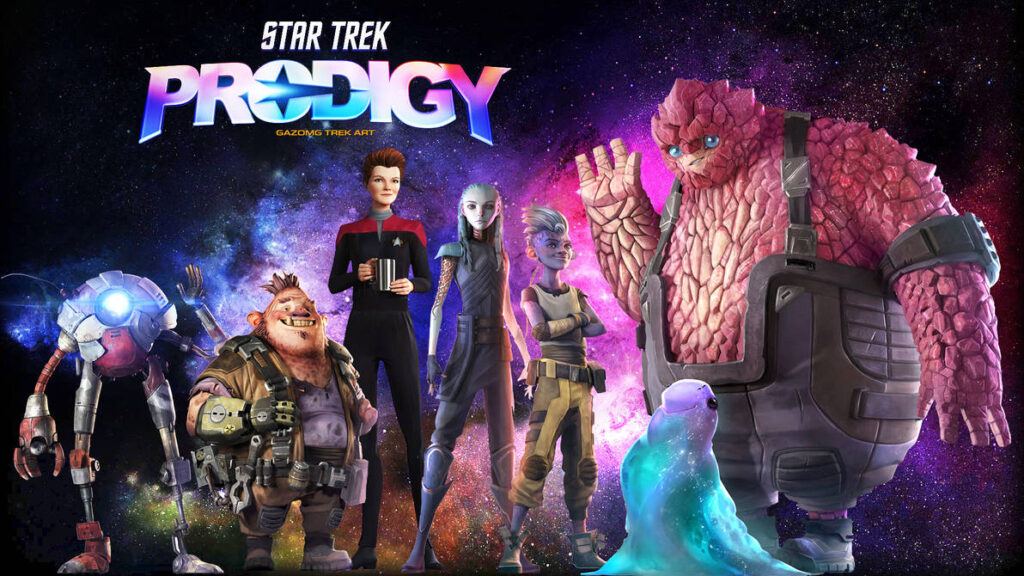

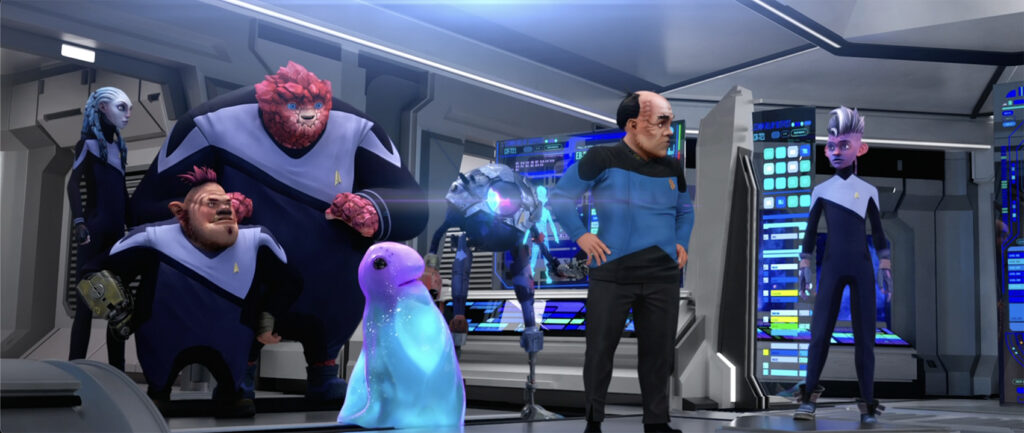
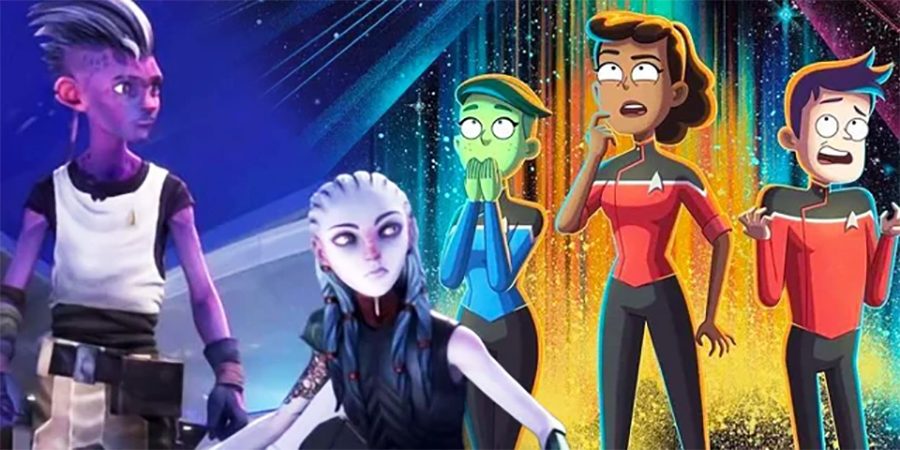
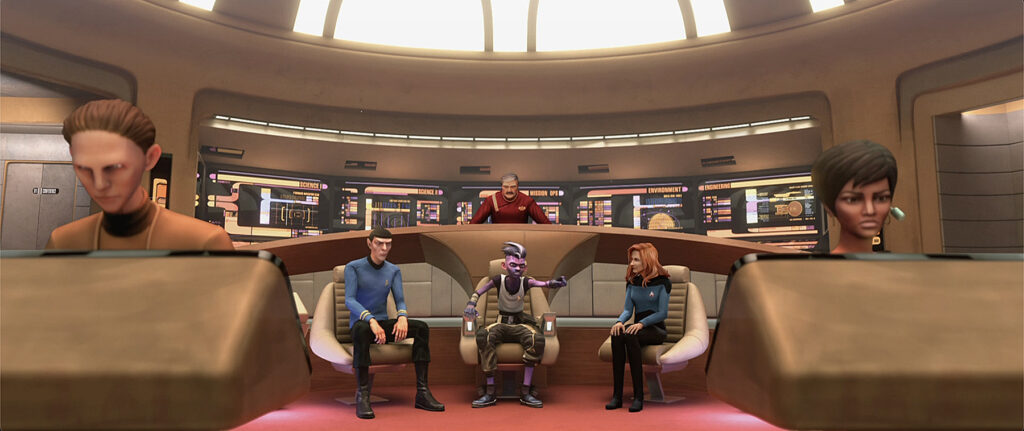
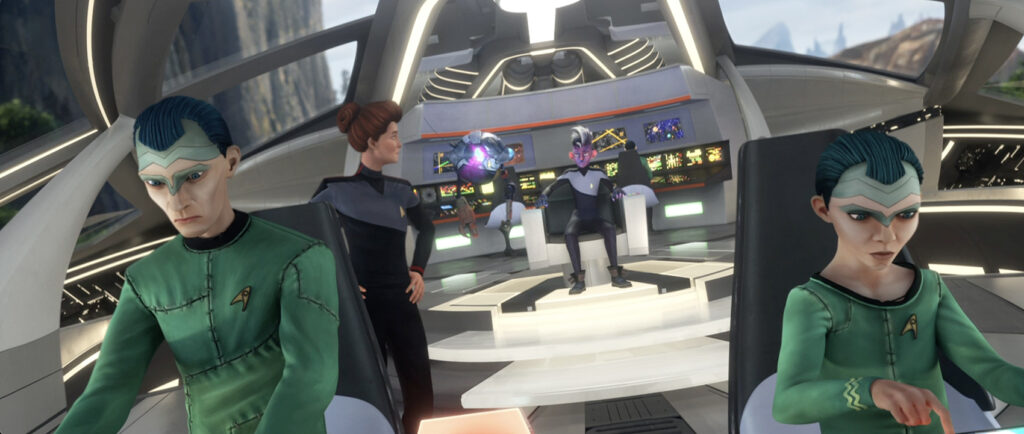
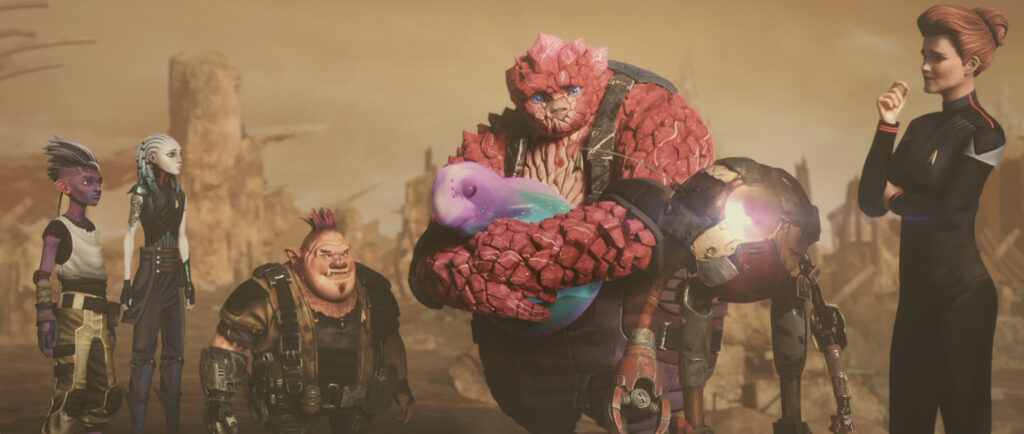
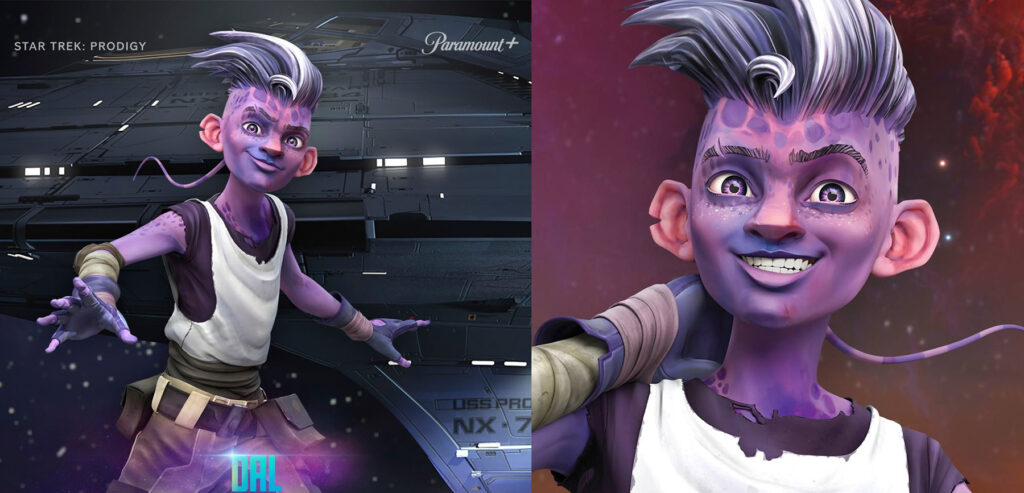

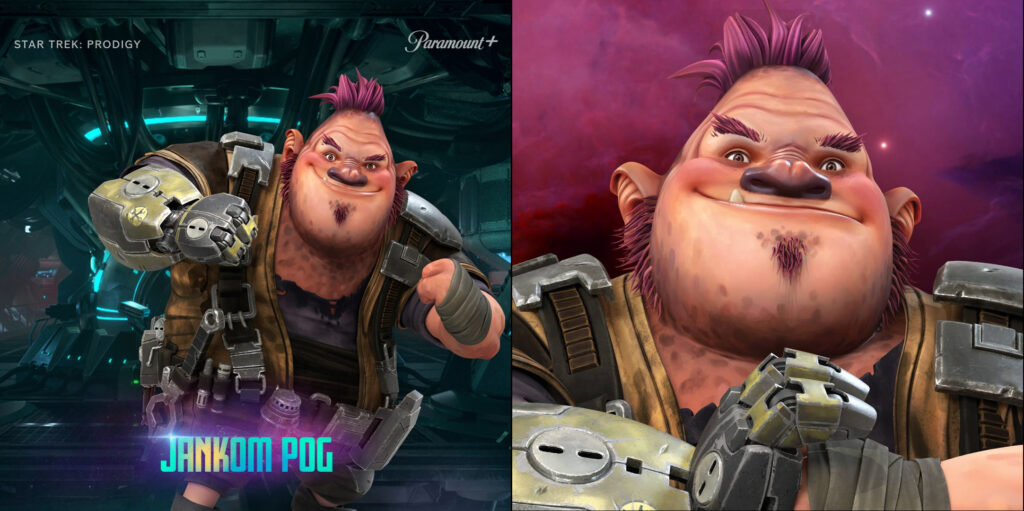
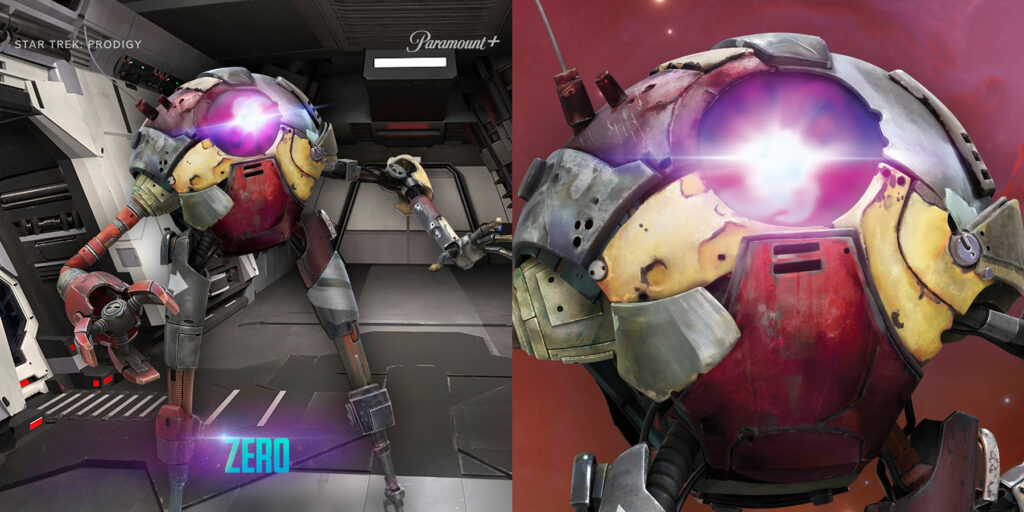
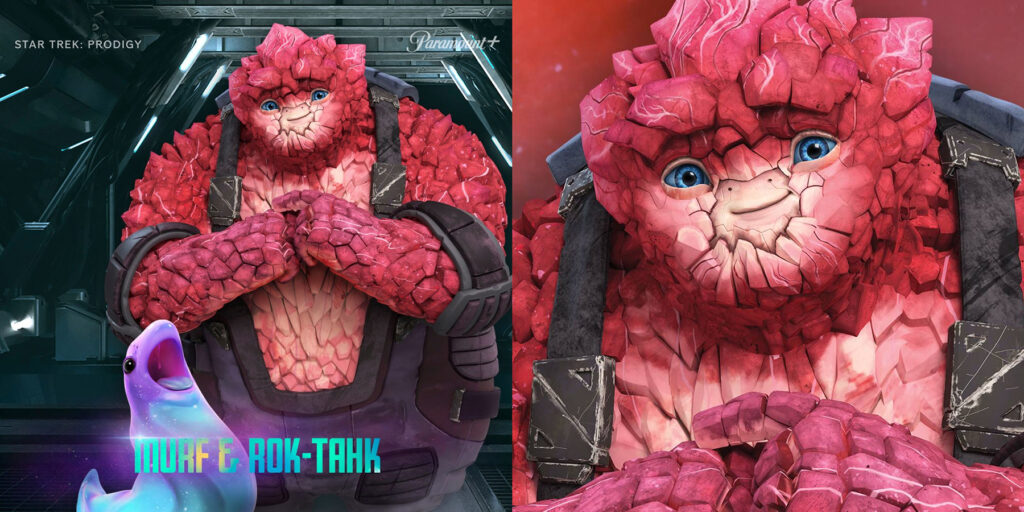
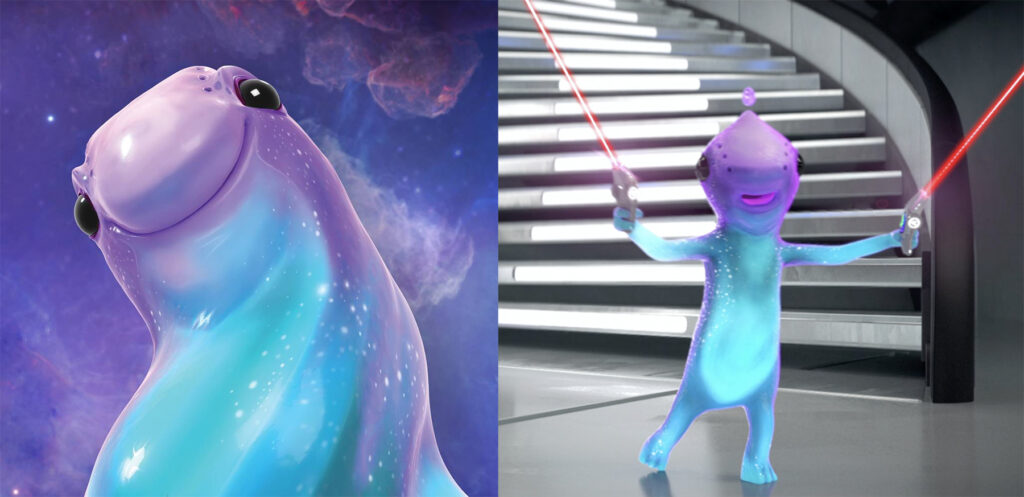
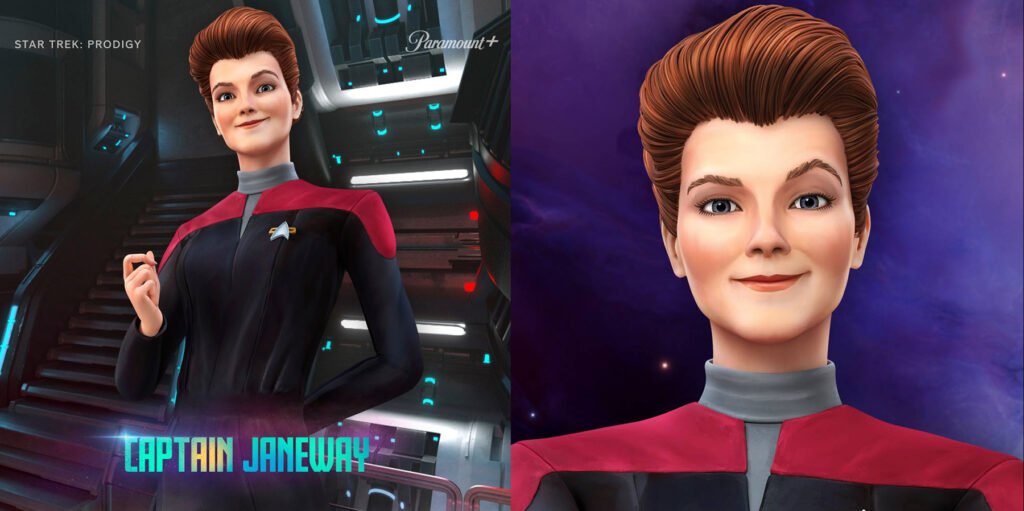
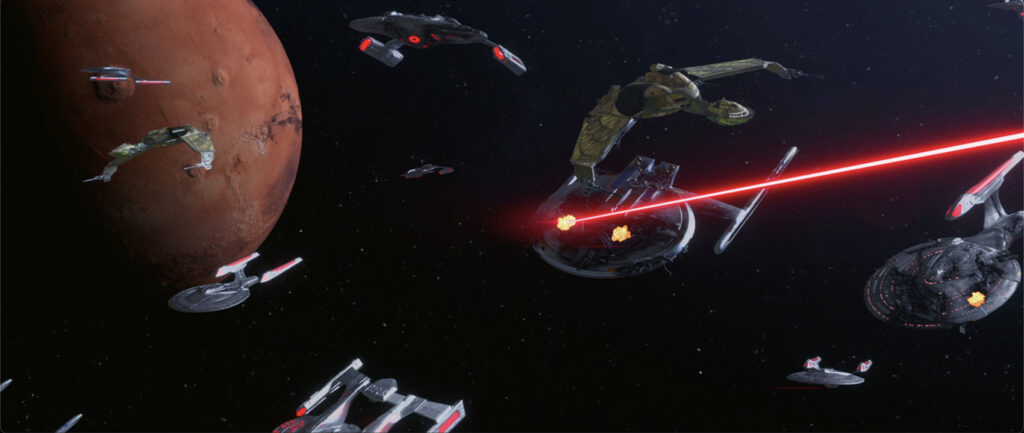
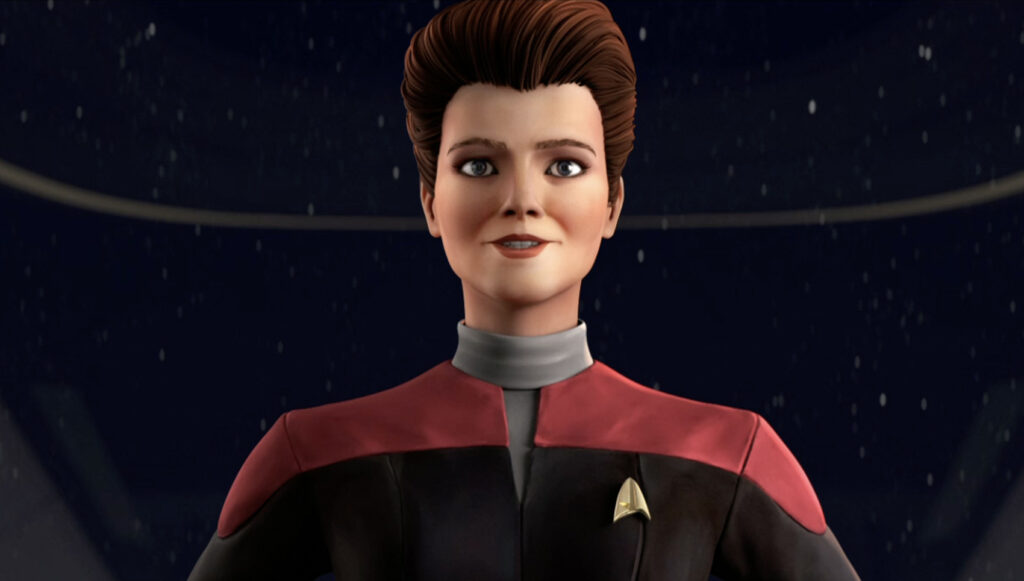

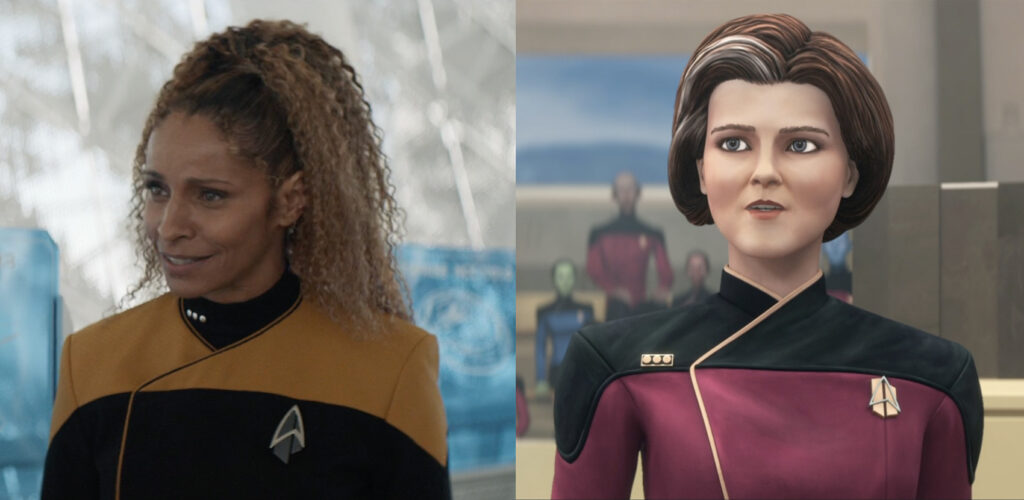
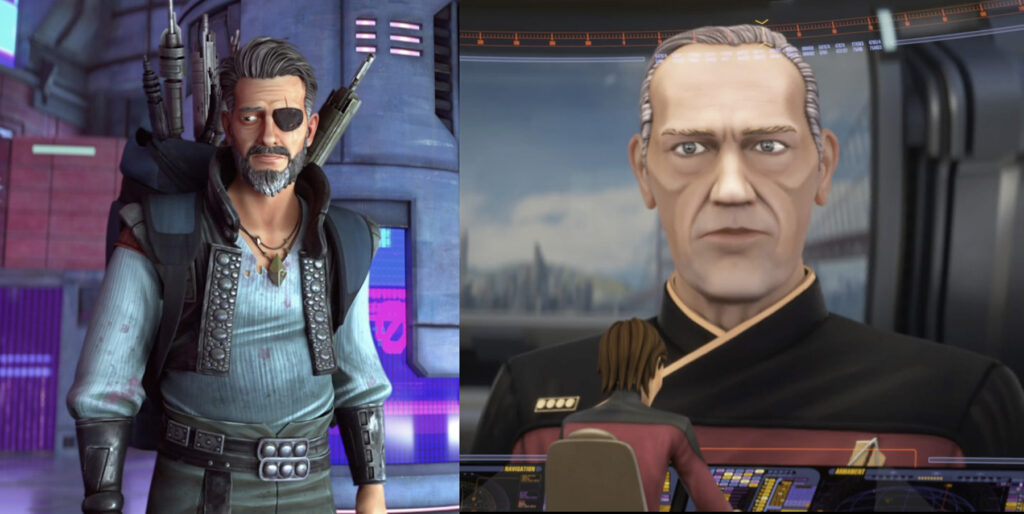
I believe Zero uses “they” pronouns?
I don’t think so, but I’d need to double check. I suspect that CBS and Paramount wouldn’t want to “go there” in using “they” as Zero’s pronoun. While the liberal viewers would cheer them, the conservative and ultra-MAGA viewers would rail at the wokeness. That’s fine for Discovery, but as a children’s show airing on Nickelodeon, it’s not a justifiable risk. Also, depending on the age, using “they” might confuse the youngest viewers who hear a male voice and wonder why Zero’s friends don’t use “he” and “him.”